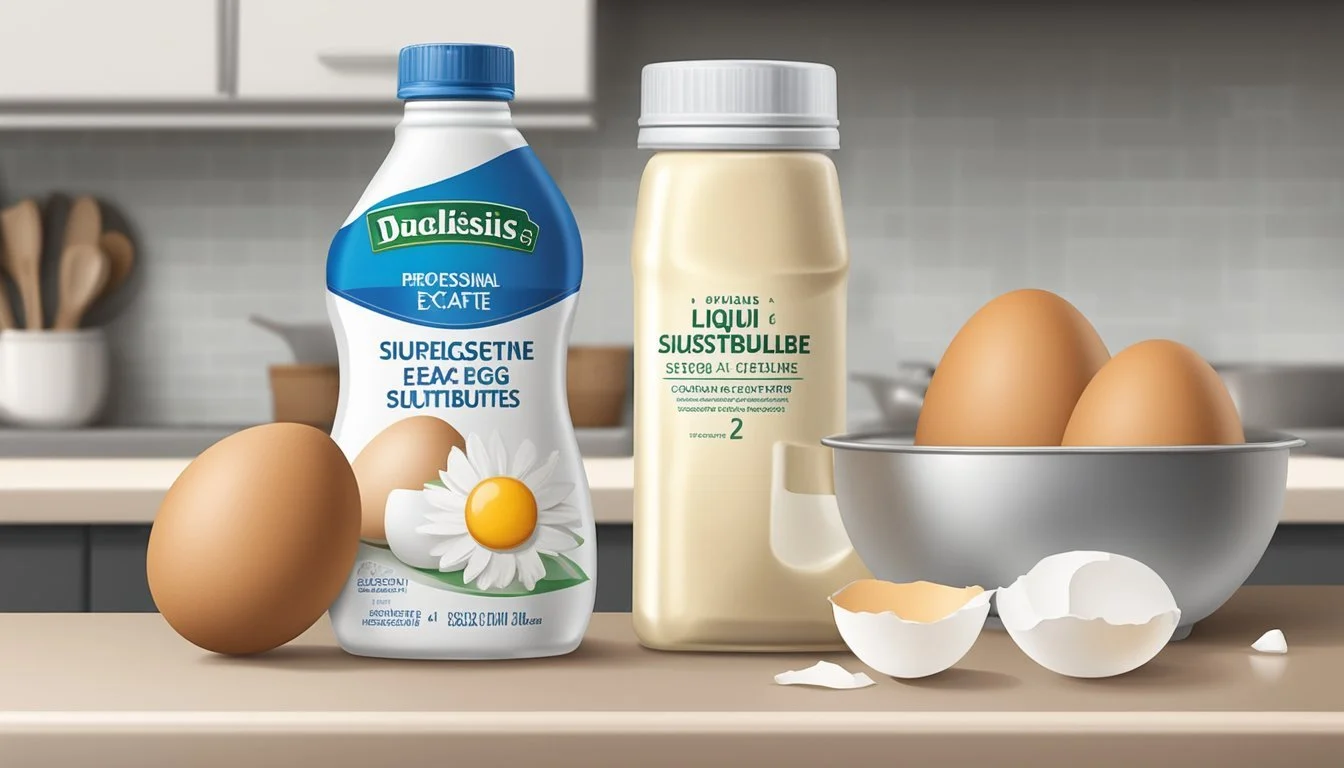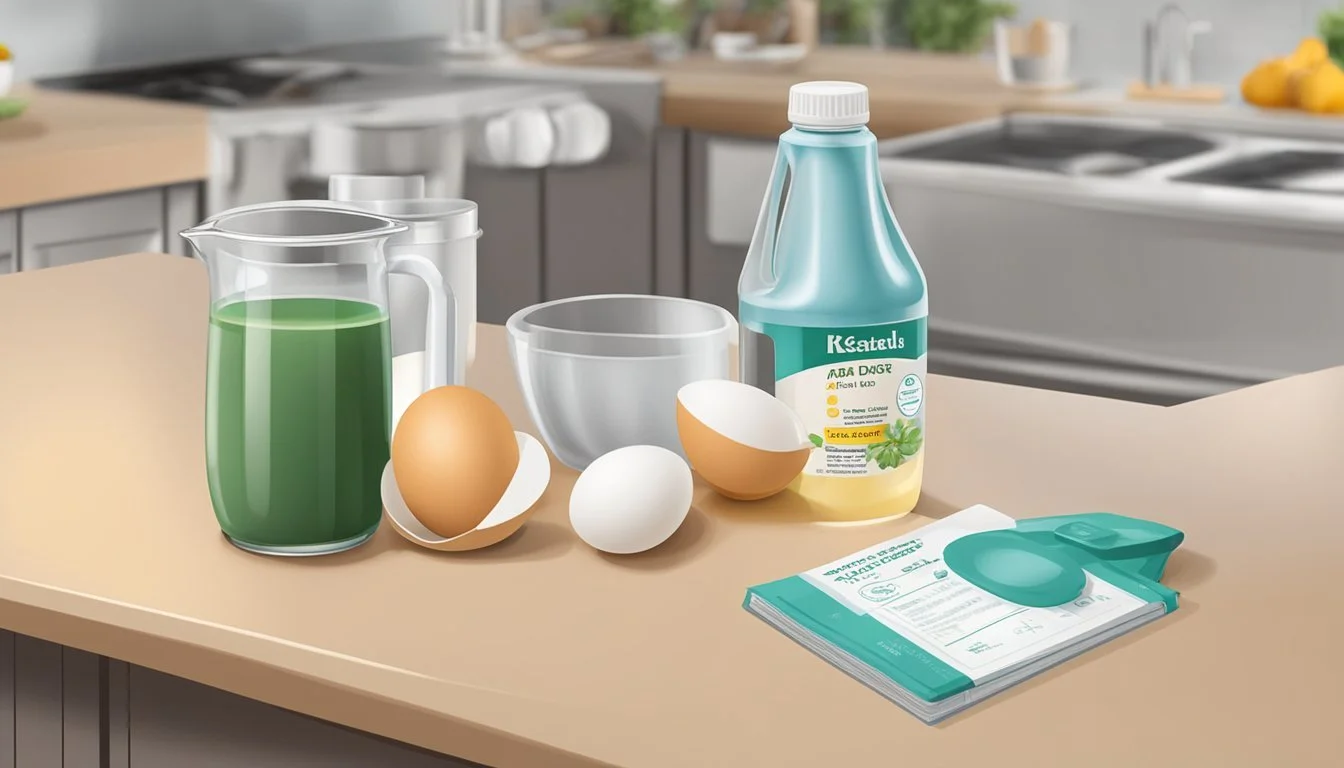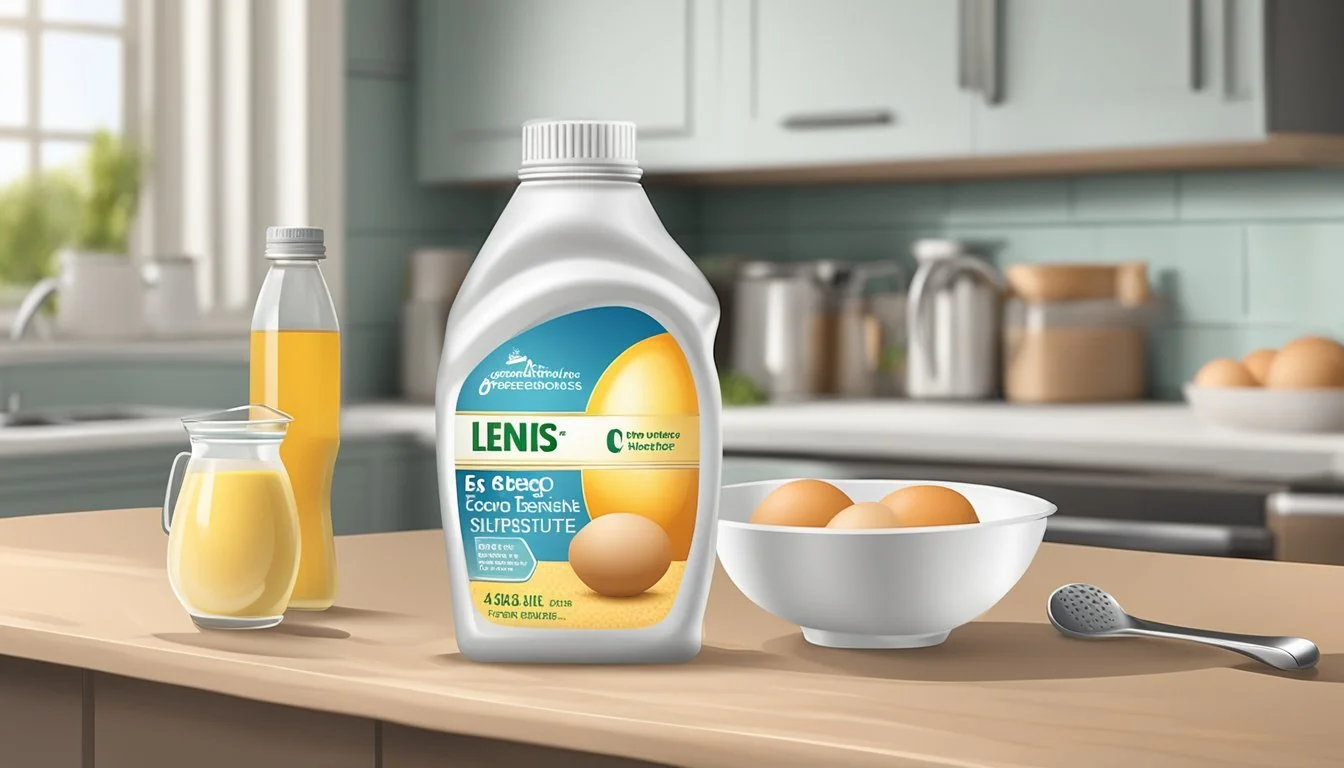How Long Do Liquid Egg Substitutes Last?
Unveiling Shelf Life Secrets
Liquid egg substitutes offer a convenient and cholesterol-free alternative to whole eggs in cooking and baking. They are usually made from egg whites and contain added nutrients, making them a popular choice for those monitoring their cholesterol intake or for those who are looking for an egg substitute due to dietary restrictions. The shelf life of liquid egg substitutes is an important factor to consider, as it can affect both the quality and safety of the product.
Once opened, a liquid egg substitute needs to be stored properly in the refrigerator. If stored at a consistent temperature below 40°F, opened liquid egg substitute typically remains safe to use for up to 10 days. It is crucial that the container is sealed tightly to maintain quality and prevent spoilage. Consumers should be aware that signs of an egg substitute going bad include a sour smell or discoloration.
Unopened liquid egg substitute usually has a longer shelf life and can often last beyond the printed expiration date when kept refrigerated. Typically, an unopened container will remain safe for about one week after the expiration date, provided it has been stored correctly. To extend its longevity, it is possible to freeze the unopened product, but this is not generally recommended for opened containers due to potential changes in quality.
Understanding Egg Substitutes
Egg substitutes are products designed to replace eggs in various culinary applications. They can cater to dietary restrictions, health concerns, and ethical choices.
Types of Egg Substitutes
Liquid Egg Substitutes: These are typically made from egg whites, offering a lower-fat and cholesterol-free option. They may include added vitamins and minerals to enhance their nutritional profile.
Vegan Egg Substitutes: Plant-based and designed to mimic the properties of eggs, these substitutes are suitable for those following a vegan lifestyle. They can be made from ingredients like flaxseed, chia seeds, or commercial powder blends derived from algae or other plant proteins.
Nutritional Comparison to Whole Eggs
Comparing liquid egg substitutes to whole eggs in nutritional terms involves looking at key constituents:
Protein: Both whole eggs and liquid egg substitutes provide a good source of high-quality protein. However, some liquid egg substitutes primarily made from egg whites have less protein than whole eggs.
Fat and Cholesterol: Liquid substitutes often have reduced or no fat and cholesterol, making them a heart-healthier choice compared to whole eggs, which contain dietary cholesterol and saturated fat.
Calories: Egg substitutes are generally lower in calories than whole eggs due to the reduced fat content.
Nutrient Whole Egg Liquid Egg Substitute Protein (grams) 6.28 Varies (generally less) Total Fat (grams) 5.3 0 - 5 Cholesterol (mg) 186 0 - 5 Calories (kcal) 74 Varies (generally less)
Note: The table provides an approximate comparison and may vary by brand and product formulation.
Storage and Handling
Proper storage and handling are crucial to maximizing the shelf life and safety of liquid egg substitutes. Adherence to refrigeration guidelines, understanding the freezing protocols, and recognizing the importance of shelf life and expiration dates are central to maintaining product quality.
Refrigeration Requirements
Liquid egg substitutes must be refrigerated both prior to and after opening. For optimal safety and quality, they should be stored at a temperature below 40°F. An opened package of liquid egg substitute should be transferred to an airtight container if not consumed immediately. It is essential that the product is continuously refrigerated to prevent spoilage and bacterial growth.
Freezing Liquid Egg Substitutes
Freezing is an option to extend the shelf life of unopened liquid egg substitute. However, freezing opened liquid egg substitutes is not recommended due to potential quality deterioration. If one chooses to freeze the product, it should be placed in an airtight container, allowing at least 1/2 inch of headspace at the top to account for expansion. The contents should be thawed in the refrigerator and consumed shortly thereafter.
Shelf Life and Expiry Date
An unopened carton of liquid egg substitute typically lasts up to 10 days beyond the expiration date when refrigerated properly. Once opened, the liquid egg substitute should be used within 7 to 10 days to ensure safety. Ensuring the product is stored in the right conditions—a cool, dry place within the fridge—is key to maintaining its integrity up to and slightly beyond the stated expiration date.
Identifying Spoilage
It's important for the consumer to recognize the signs of spoilage in liquid egg substitutes to ensure they are consuming a quality product that is safe to eat.
Visual and Textural Cues
Appearance can be a clear indicator of spoilage. A liquid egg substitute that has gone bad may show visible signs such as mold or an unusual coloration. Consumers should inspect the liquid for any green, black, or pink spots which imply mold growth, and any divergence from the normal pale yellow color could be a cause for concern. Texture also plays a role in determining spoilage; if the liquid egg substitute becomes slimy or thicker than its usual consistency, it should be discarded.
Odor Indicators
Smell is a decisive factor when identifying spoiled liquid egg substitutes. If the product emits an off odor or a sulfurous smell, it indicates that the product is no longer fresh and should be thrown away. Liquid egg substitutes should have a subtle, clean smell, if any; a pungent smell is a clear sign that the product has spoiled.
Usage in Cooking and Baking
Liquid egg substitutes are versatile ingredients that can be used in various cooking and baking applications, offering a convenient alternative to whole eggs. These substitutes can deliver similar results in recipes, from omelets to baked goods, while often providing lower cholesterol and fat content.
Substituting for Whole Eggs in Recipes
To replace whole eggs in cooking, such as in omelets or scrambled eggs, an equal volume of liquid egg substitute can be used. For example, if a recipe calls for one large egg, it can typically be replaced with 1/4 cup of egg substitute. This replacement holds true across a range of savory dishes, including frittatas.
In baking, liquid egg substitutes can effectively be used in pancakes, batter-based recipes, quick breads, and cookies. Replacement ratios remain consistent: 1/4 cup of egg substitute is equivalent to one large egg. The introduction of the substitute should be done carefully to ensure even distribution within the batter.
Effect on Flavor and Texture
In terms of flavor, liquid egg substitutes are designed to mimic the taste of whole eggs closely. Slight variations may occur due to the absence of yolks in some substitutes, which can affect the richness of the final product. For goods like cakes, cupcakes, and brownies, where eggs are crucial for binding and leavening, substitutes can still achieve a desirable taste and consistency.
Texture is an important consideration when using egg substitutes. Baked goods may have a slightly different texture, but they should still rise appropriately and maintain a desirable crumb when leaveners like baking soda and vinegar are used correctly. Cooking applications, such as omelets, might produce a less fluffy result but remain an enjoyable alternative to their egg counterparts.
Health and Dietary Considerations
When considering liquid egg substitutes, one must take into account their health and dietary impact, particularly in terms of cholesterol and fat content, as well as their suitability for individuals with allergies or specific dietary restrictions.
Cholesterol and Fat Content
Liquid egg substitutes often offer a lower cholesterol and fat alternative compared to traditional eggs. Cholesterol is commonly reduced or entirely absent in these products, catering to the needs of individuals managing their cholesterol intake. The fat content is typically lower as well, with many brands opting to use egg whites instead of whole eggs, substantially cutting down on saturated fats.
Allergy and Dietary Restrictions
The advantage of liquid egg substitutes extends to those with allergies. Since some brands use only egg whites, the common allergen found in egg yolks is eliminated, though one should always verify the ingredients to ensure it is free from allergens they need to avoid. Additionally, liquid egg substitutes can be engineered to be vegan friendly, containing no animal products and instead utilizing plant-based proteins. This makes them an inclusive option for individuals with certain dietary restrictions. However, due to potential cross-contamination during manufacturing, those with severe allergies must review product labels and brand practices to ensure safety.
Alternative Non-Egg Replacements
When seeking non-egg alternatives for cooking and baking, there are options available that can provide similar functional benefits to eggs. These alternatives are particularly useful for dietary restrictions, allergies, or lifestyle choices.
Plant-Based Substitutes
Legume-Based Options:
Aquafaba: The liquid from canned chickpeas can be whipped into a foam with properties similar to egg whites. It's especially useful for vegan meringues and mousses.
Silken Tofu: This soft, creamy tofu variant can replace eggs in creamy mixtures or custards. It's often used blended to maintain a smooth texture.
Seed-Based Replacements:
Chia Seeds: When mixed with water, chia seeds form a gel-like consistency known as 'chia egg', suitable for binding ingredients in recipes.
Flax Seeds: Ground flax seeds also create a 'flax egg' when mixed with water, and can be used for similar purposes as chia eggs.
Common Ingredient Alternatives
Fruit and Vegetable Purees:
Bananas: Mashed banana works well as a binder and moisten in baked goods, adding a mild, sweet flavor.
Applesauce: A common replacement that provides moisture and sweetness with a neutral flavor profile.
Additional Substitutes:
Commercial Egg Replacers: These products are specifically designed to mimic the properties of eggs in baking and are often made from various starches and leavening agents.
Buttermilk: Though typically used in pancakes and some baked goods, it can sometimes function as a binding agent.







